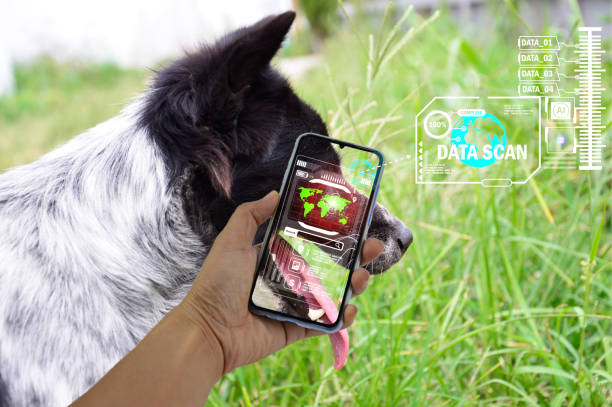The Dawn of the AI-Powered Journey
Imagine a road trip in the not-so-distant future. Your journey doesn’t begin when you pull out of the driveway, but hours earlier, when an AI travel assistant planned the optimal route, accounting for real-time traffic, weather, and even your personal preferences for scenic detours. Your electric vehicle, already charged to the perfect level based on the trip’s energy demands, greets you. As you settle in, the cabin adjusts the lighting and temperature based on your biometric data from your smartwatch. The vehicle’s components—from tires that adapt their tread to changing road conditions to a suspension system that proactively smooths out bumps—are in constant communication, ensuring maximum safety and efficiency. This isn’t science fiction; it’s the emerging reality of travel, transformed by a deeply integrated ecosystem of artificial intelligence. We are moving beyond standalone gadgets and into an era where every element of our journey is part of a cohesive, intelligent network, a core topic in AI for Travel Gadgets News.
The conversation is shifting from singular innovations like GPS or cruise control to a holistic system where the car, our personal devices, and the surrounding infrastructure communicate seamlessly. This revolution is powered by advancements in edge computing, IoT sensors, and sophisticated machine learning algorithms. It promises to redefine not just how we get from point A to point B, but the very experience of travel itself, making it safer, more personalized, and profoundly more efficient.
Section 1: The Foundation: Intelligent Vehicle Components as a Sensory Network
The future of autonomous and assisted driving rests on a foundation of hyper-aware components. The vehicle is no longer just a collection of mechanical parts; it’s becoming a sentient machine, with each part acting as a nerve ending in a complex sensory network. This evolution is a major focus in Autonomous Vehicles News and AI Sensors & IoT News, as component-level intelligence is the bedrock upon which true autonomy is built.
From Passive Parts to Proactive Partners
The most revolutionary concepts are emerging from the ground up—literally. Consider the evolution of the tire. For over a century, it has been a passive rubber ring. Now, cutting-edge prototypes are being developed with embedded sensors and AI processors. These “smart tires” can monitor their own health, detecting pressure drops or excessive wear and alerting the driver or the vehicle’s central AI long before a failure occurs. More advanced concepts, often highlighted in AI Research / Prototypes News, feature self-healing polymers that can repair minor punctures on the fly or even morph their shape and tread pattern to adapt to different terrains, changing from a smooth highway configuration to a rugged off-road grip in seconds. One visionary concept even imagines spherical tires, allowing a vehicle to move laterally, making parallel parking a trivial sideways slide.
The Vehicle’s Central Nervous System
This intelligence extends throughout the vehicle’s chassis. AI-managed suspension systems use forward-facing cameras and sensors to scan the road ahead, predict the impact of potholes or bumps, and adjust the dampers in milliseconds to provide a perfectly smooth ride. In electric vehicles, AI algorithms manage battery health with incredible precision, optimizing charging cycles and power distribution to extend lifespan and range. This constant stream of data from hundreds of sensors is processed by powerful onboard computers, a key trend in AI Edge Devices News. Instead of sending all data to the cloud, critical decisions—like evasive steering or emergency braking—are made locally on the device for instantaneous response, a life-or-death necessity in transportation.

This network of smart components creates a detailed, real-time digital twin of the vehicle’s physical state. The AI doesn’t just know the car’s speed; it understands the grip of each tire, the load on the suspension, and the efficiency of the powertrain, making micro-adjustments that a human driver could never perceive, let alone execute.
Section 2: The Brains of the Operation: In-Car AI and Hyper-Personalization
If smart components are the vehicle’s senses, then the central in-car AI is its brain. This is where data is fused, decisions are made, and the user experience is curated. The modern car is rapidly transforming from a mode of transport into a personalized mobile environment, a topic frequently covered in AI Assistants News and AI Phone & Mobile Devices News.
The Ultimate Co-Pilot and Concierge
Today’s voice assistants are just the beginning. The next generation of in-car AI will be a true co-pilot and proactive concierge. By integrating with your calendars, emails, and personal devices, it will understand the context of your journey. For example, if you have a meeting, the AI won’t just navigate you there; it will ensure you arrive on time by adjusting for unexpected traffic, find the closest parking, and even send a notification to other attendees if you’re running late. This AI will be a central hub, connecting your car to your other smart devices. As you approach home, it can communicate with your Smart Home AI News-featured devices to turn on the lights, adjust the thermostat, and even preheat the oven, creating a seamless transition from your journey to your destination.
A Cabin That Cares: Health and Wellness on the Go
The car of the future will also be a guardian of your well-being, a trend at the intersection of Health & BioAI Gadgets News and automotive tech. By connecting with data from your fitness tracker or smartwatch—a key area in Wearables News—the vehicle can monitor your vitals. If it detects signs of driver fatigue through biometric data or by using interior-facing AI-enabled Cameras & Vision News to track eye movement, it can suggest taking a break, adjust the cabin’s lighting to a more alerting blue hue, or play energizing music. In a future with fully autonomous vehicles, the car could even find the nearest rest stop and park itself for a mandated break. This proactive wellness monitoring represents a paradigm shift in vehicle safety, moving from reactive systems (like airbags) to preventative, health-centric ones.
This level of personalization requires sophisticated natural language processing and emotional sentiment analysis. The AI will learn your preferences, understand nuanced commands, and even detect the mood of the occupants through tone of voice, adjusting the ambiance accordingly. The car becomes less of a tool and more of a companion, a central theme in AI Companion Devices News.
Section 3: The Connected Journey: An Ecosystem of Travel Gadgets
The AI-powered travel experience extends far beyond the confines of the vehicle itself. A constellation of interconnected gadgets and platforms will work in concert to streamline and enrich every phase of the journey, from planning to exploration.

Smarter Planning, Seamless Exploration
The journey begins with AI-driven planning tools. These platforms go beyond simple mapping by creating dynamic, personalized itineraries. They can suggest points of interest based on your past travel history, social media activity, and stated preferences, while optimizing the entire trip for time, cost, and enjoyment. Once on the road, the experience is augmented by a new generation of smart gear. Imagine Smart Glasses News becoming a reality for tourists; you could look at a historic building and see an AR overlay with its history, architectural details, and reviews, all translated into your native language in real-time. This is a prime example of how AR/VR AI Gadgets News will reshape tourism.
Automated Storytelling and Intelligent Luggage
For content creators and families alike, the hassle of documenting a trip is being automated. The latest AI Cameras News highlights devices that can automatically capture photos and videos at scenic points, identify the best shots, and even edit them into a shareable travel vlog, complete with music and titles. This allows travelers to remain in the moment while an AI handles the creative heavy lifting, a boon for AI Tools for Creators News. Even the mundane task of handling luggage is being reimagined. The field of Robotics News is producing smart suitcases that use computer vision and sensors to autonomously follow their owner through an airport or hotel lobby, navigating crowds with ease. These AI Personal Robots promise to free up your hands and reduce the physical burdens of travel.
This interconnected ecosystem relies on the smartphone as the central remote control, but increasingly, control is becoming ambient and voice-activated, weaving a web of convenience around the traveler. From your car’s AI booking a table at a restaurant recommended by your AR glasses, to your smart luggage notifying your phone of its location, the entire experience is designed to be frictionless.

Section 4: The Road Ahead: Opportunities, Challenges, and Best Practices
While the vision of a fully integrated AI travel ecosystem is compelling, its implementation is fraught with challenges that must be addressed. The road to this future requires careful navigation of technical, ethical, and societal hurdles.
Pros and Recommendations
- Unprecedented Safety: The single greatest benefit is the potential to drastically reduce human error, the leading cause of traffic accidents. AI systems can see 360 degrees, never get distracted, and react faster than any human.
- Enhanced Efficiency: From optimizing vehicle performance to reducing traffic congestion through coordinated driving, AI can lead to significant savings in time, fuel, and energy, a key topic for AI for Energy / Utilities Gadgets News.
- Actionable Insight for Consumers: When considering new travel tech, prioritize devices that offer interoperability. Look for gadgets that work with major ecosystems (Apple, Google, Amazon) to ensure they can communicate with your existing and future devices. Start with smaller, impactful additions like an AI-powered dashcam or a smart car adapter before investing in a fully integrated vehicle.
Cons and Common Pitfalls
- Data Privacy and Security: An AI-powered vehicle and its connected gadgets collect an immense amount of personal data—your location, driving habits, conversations, and even biometric information. This makes them a prime target for cyberattacks. Robust security is paramount, a growing concern discussed in AI Security Gadgets News. Consumers must be vigilant about data policies and demand transparency from manufacturers.
- Ethical Dilemmas: Autonomous vehicles will inevitably face “trolley problem” scenarios where they must make a split-second ethical choice in an unavoidable accident. Programming these ethics is a monumental challenge with no easy answers.
- Infrastructure Dependency: For the full potential to be realized, vehicles need to communicate not just with each other (V2V) but with the surrounding infrastructure (V2X), such as smart traffic lights and road sensors. This requires massive public and private investment, a topic central to Smart City / Infrastructure AI Gadgets News.
Conclusion: The Journey is the Destination
The future of travel is not about a single, revolutionary gadget. It’s about the convergence of dozens of them into a single, intelligent, and predictive ecosystem. From self-healing tires and proactive wellness monitoring inside the car to AR glasses and robotic luggage that enhance the destination, AI is weaving a new fabric for how we move through the world. This transformation, a constant theme in AI for Travel Gadgets News, promises journeys that are not only faster and safer but also more personalized, intuitive, and deeply integrated with our digital lives. While significant challenges surrounding security, ethics, and infrastructure remain, the momentum is undeniable. We are on the cusp of an era where the journey itself, curated and enhanced by a network of intelligent companions, truly becomes the destination.










